A set of copper lanterns, modelled on the 14th century example in the Museum of London.
We needed more lights around the camp – ideally, with some protection from wind. We had one old medieval lantern, made by a former campsite member several years ago. It was the right aesthetic, but needed better construction. So rather than just making one, my husband and I did a run of them….
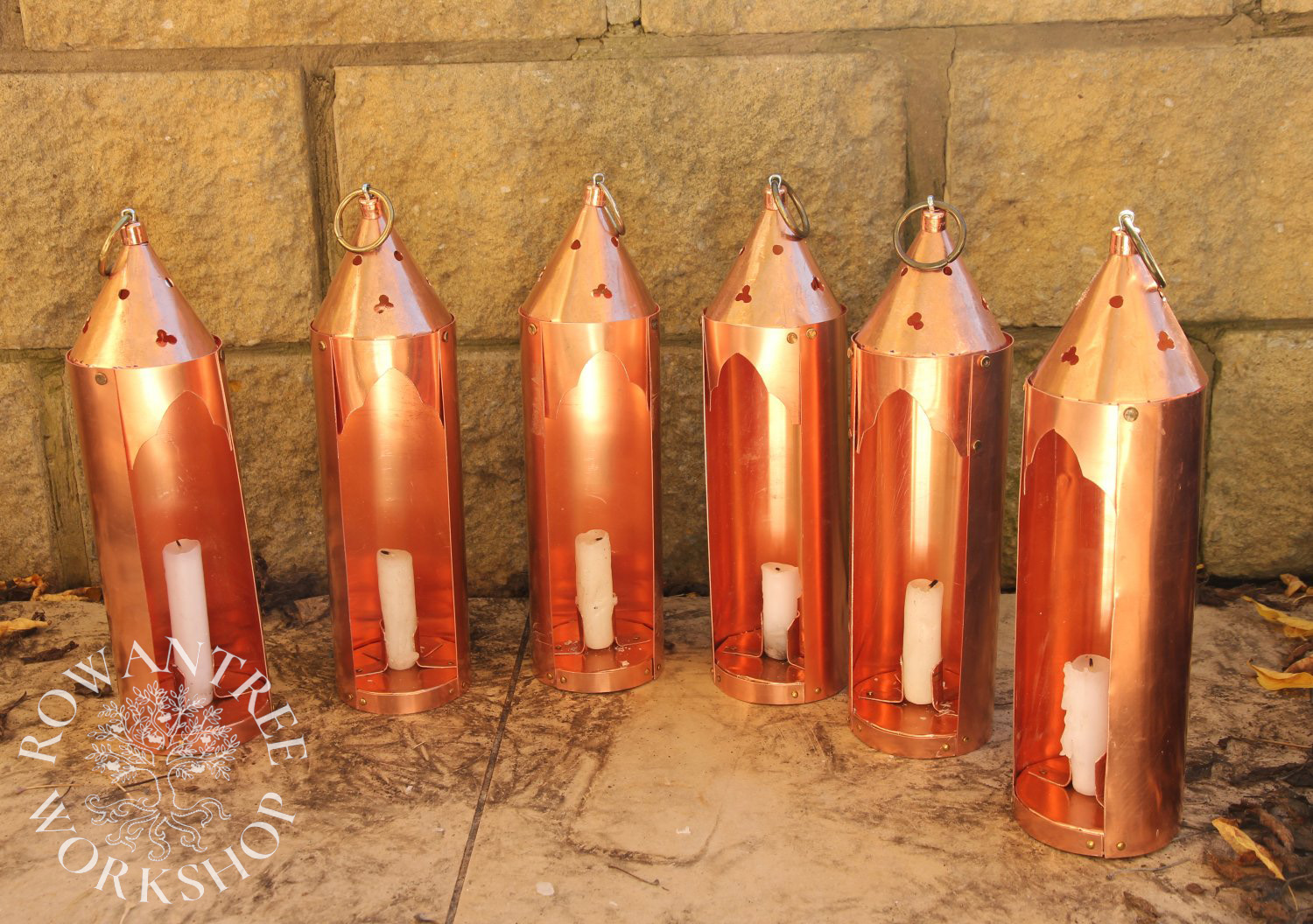
Research and Design
Lanterns appear in medieval manuscripts from the 13th century onwards, usually for outdoor lighting or travel at night. In The Medieval Household (1998), Egan suggests that there was a shift away from oil to candles in the 13th century, with the rise of metal candlesticks and candles – especially tallow candles.
The London Medieval Catalogue 1940 (1993) provides two examples of metal lanterns dated to the 14th century, both are made of ‘base copper alloy’. Egan identifies this as leaded copper – a metal alloy common in the middle ages, but with no modern use or term.
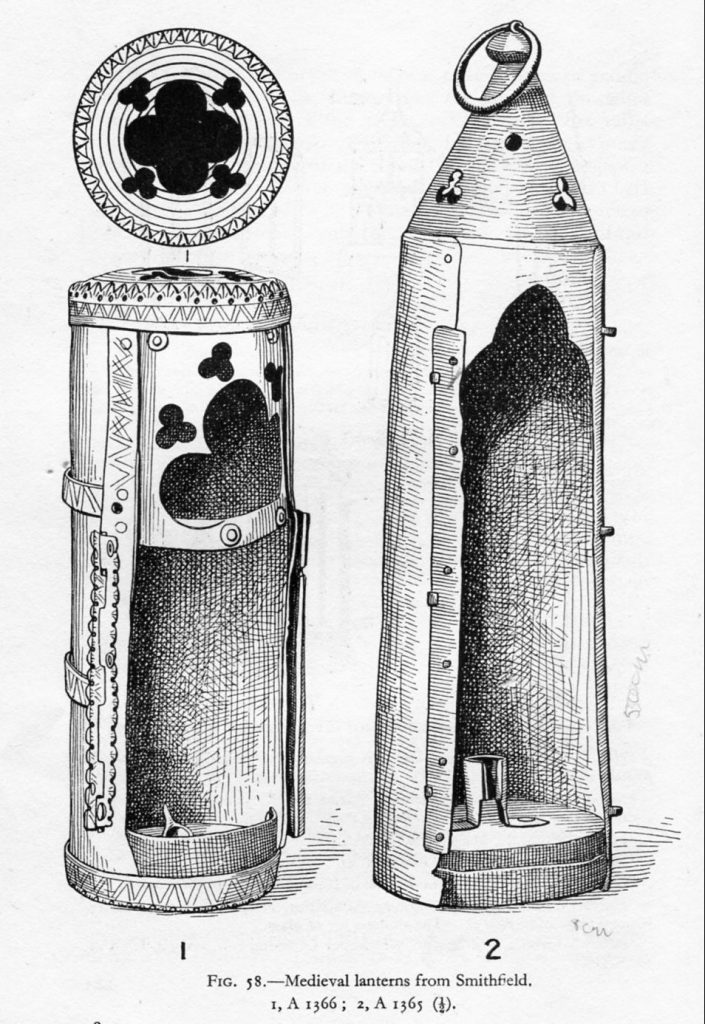
Source: Perkins 1993
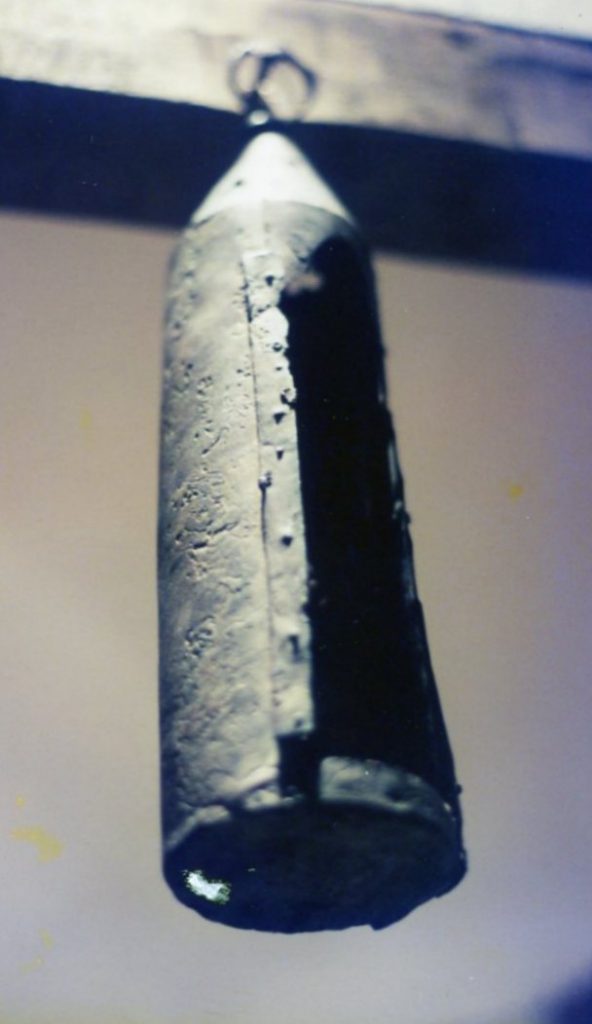
Photo: Robyn Spencer
When I saw the taller lantern (A1365) in the Museum of London, it looked more copper coloured than brass (copper with zinc) or bronze (copper with tin). And, since copper is easier to work, this looked like a reasonable solution.
I based the design on A1365, but without the door – these would be simple open lanterns.
Construction
I made a pattern in cardboard to check the proportions, then finessed it a little so it fitted onto the copper sheets, which we ordered online – 30cm square, 0.7mm thick.

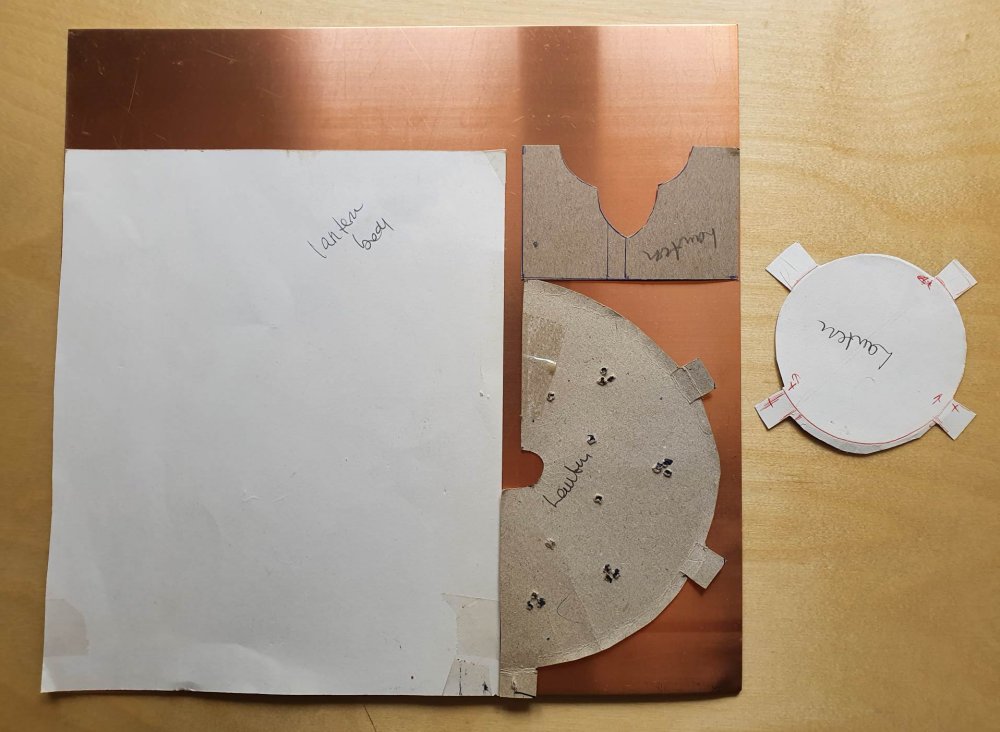
Once the copper arrived, I made a prototype. There were some lessons learned from this… I made the cup from a piece of copper water pipe, cutting slits in the base to spread as legs for attaching to the base. This worked fine, but it was hard to get the candle stub out – needs a front slit.
Likewise, making the curved pieces by hand forming over a pipe was too slow and uneven – we needed a better approach. My husband Nico suggested two pieces of plastic irrigation pipe in slightly different dimensions as inner and outer formers, which worked much better.
Into production mode. The lanterns needed a solid base, so I cut these out of wood with the bandsaw. I was worried about burning the base if the candle burnt right down, so I covered the base in thin copper foil. I made the candle holders from copper water pipe, cutting a slot along the whole piece and splitting the base in 4 . I attached these to the base with two copper nails, clenching over under the wooden base.
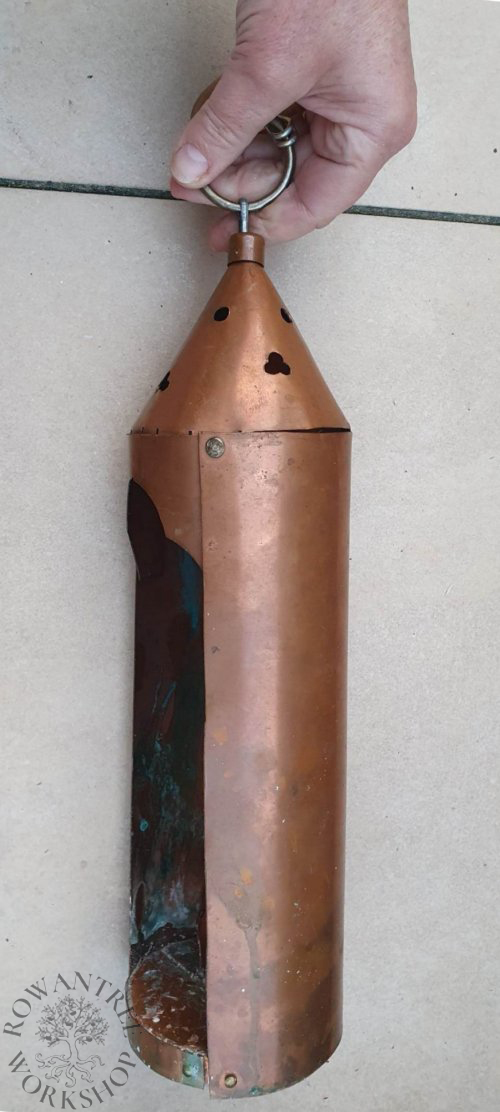

I cut the pieces out of the copper with aviation shears, and drilled the air holes with the drill press. It took two of us to form the sides using the plastic pipes, but it gave a lovely even result. I joined the two main pieces, and the cap using brass escutcheon pins as rivets (and copper nails when I ran out).
The top cap is a 15mm copper water-pipe cap, with a hole drilled through, and the metal rings are held on with cotter pins, expanded as much as possible inside the lid.
The lanterns were a great success, providing excellent light about the camp – bright, easy to hang or stand, coped well in the wind.
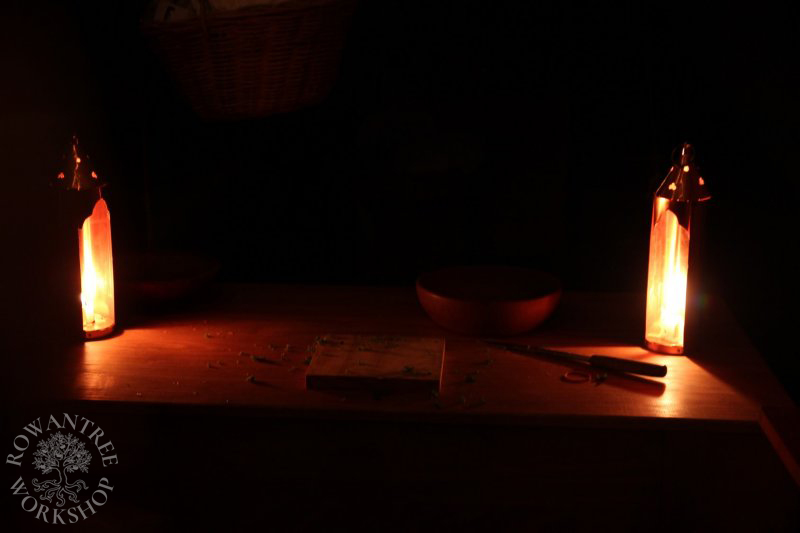
Storage chest
In keeping with our philosophy of making sure the storage container is also medieval (and ideally useful in its own right), Nico made a 6 board chest to hold the lanterns. It is based on the Mary Rose find 81A0917 depicted in Before The Mast (Gardiner 2005), with dimensions adjusted to suit. It also provides extra seating around the campsite.
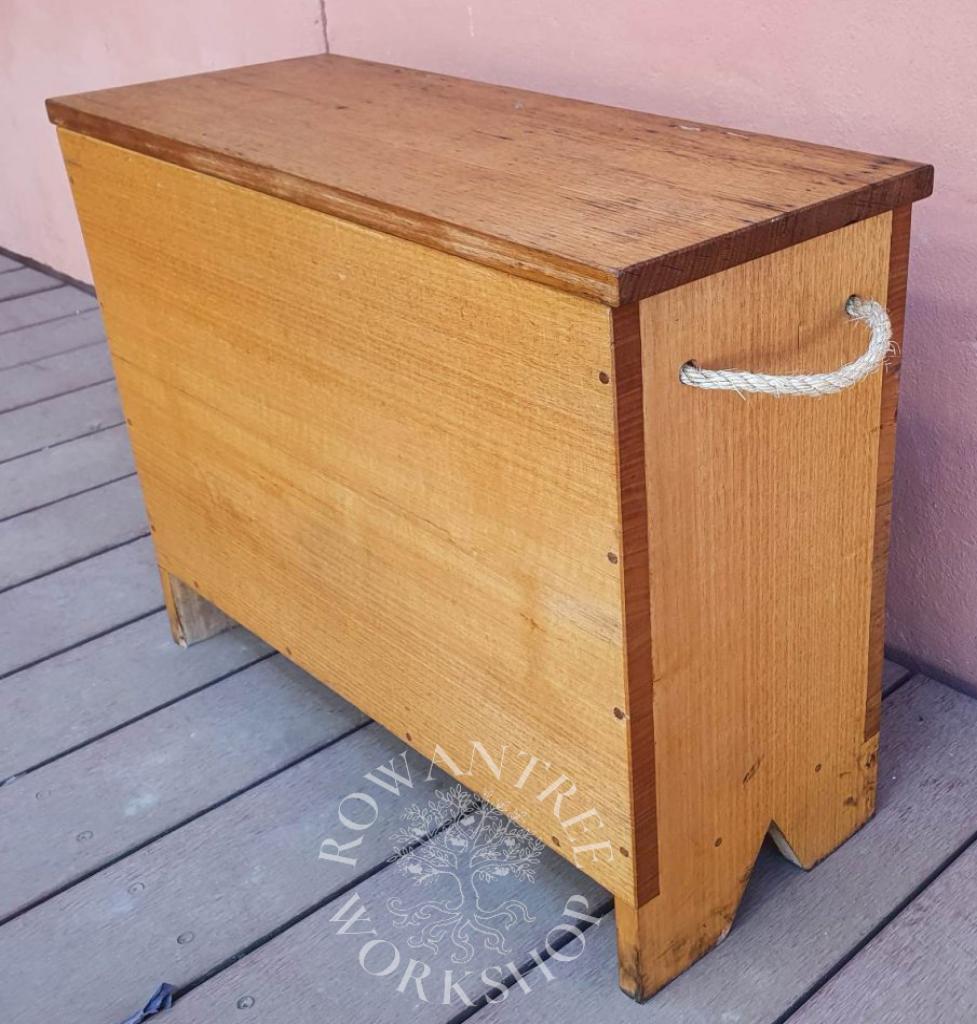
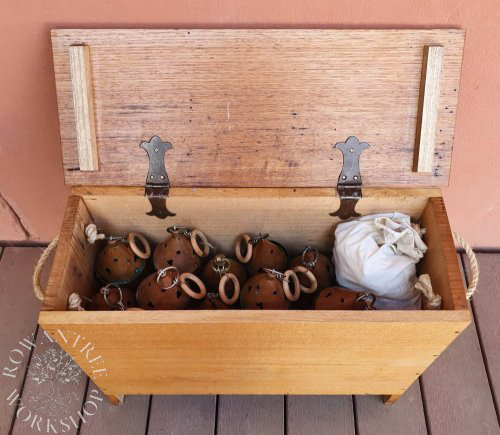
Afterthoughts
There were some issues…. A full length candle was too long – it burned down too fast in the enclosed cap, and heated it up. Half candles lasted longer. The bright copper focussed the light, but also the heat, so again, the candles burned quickly.
And because the metal rings were just held on with cotter pins, they did not stand up, but rested on the cap – they got too hot to pick up. After the first camp, I added wooden rings, which solved the problem.
The copper foil on the base was easy to work, but not really strong enough – a piece of the same copper sheet would work better.

